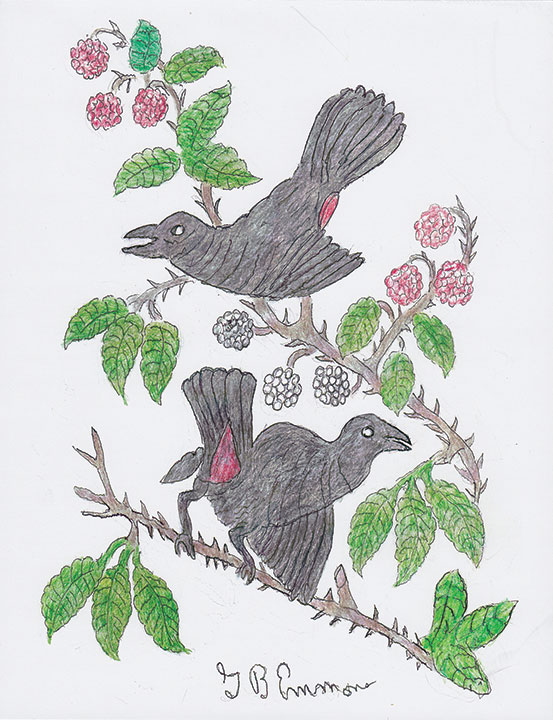The very common catbird has become a frequent and friendly visitor to our backyards, even in suburban Mattapoisett.
According to the Audubon birdwatching guide, there are two separate species for you to recognize when you see them. One, as illustrated, is a deep black shade, and the second has a very light gray plumage. Both have black hats on their heads and a long tail that they flicker and flex when wanting attention. Both varieties are friendly companions to human beings and talk to them by revealing their presence nearby in shrubbery by mewing their familiar cat-like call as assurance of harmless, well-meaning proximity.
The name ‘catbird’ itself has become a traditional metaphorical expression of “sitting in the catbird seat,” indicating an absolute control situation of an individual more than anyone envious of that supreme position.
The bird itself also fits the bill of strong character in its lifestyle and is strictly monogamous most of its normal life as a breeding parent, like Canada geese. The female of the faithful pair lays from three to six greenish-blue eggs with yellow spots, easily identified as their own, to defend against any invasion of unwanted cowbird eggs by pushing them out on the ground.
The catbird is a very vocal species and a close cousin to the outspoken mockingbird and loud brown thrasher. However, they do not similarly imitate a wide variety of different of successive calls but are very disciplined to end any long-winded conversation with a terminal sounding “chit or chat” after having spoken their minds.
Catbirds can be enticed to come right up to human beings by hand feeding raisins to get their attention away from climbing stalks of fruit to get black or red berries, as in my illustration.
The more you get to know and appreciate the company of catbirds, the more you can elevate their story telling literary inspiration equal to the barnyard tales of Beatrix Potter’s “Peter Rabbit” and “Jemima Puddle-Duck” in the children’s section of the Mattapoisett Library.
My article and drawing in The Wanderer have been intended to create an environmental awareness of the catbird as curious and interesting, and might be entertaining to children of all ages.
By George B. Emmons
